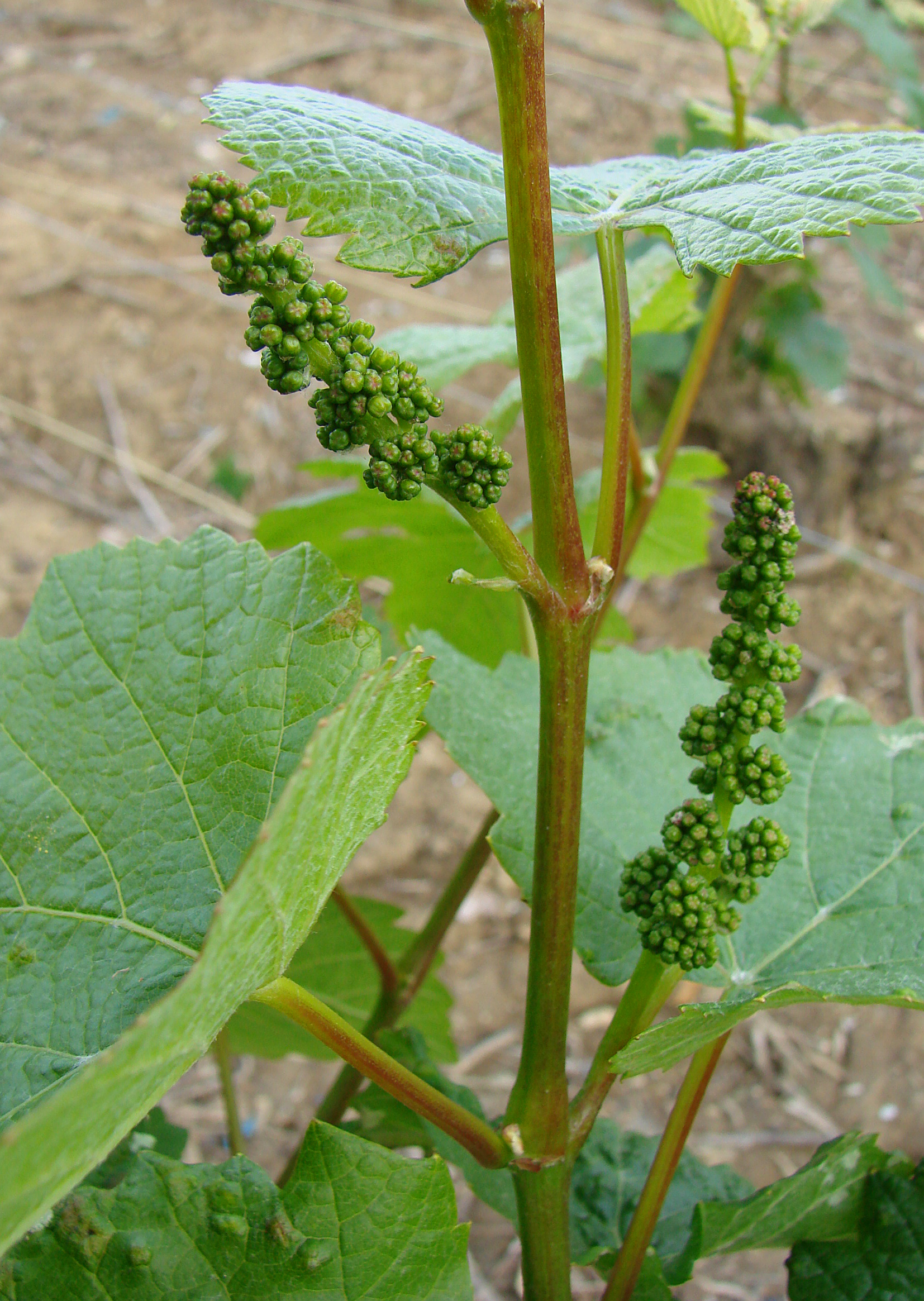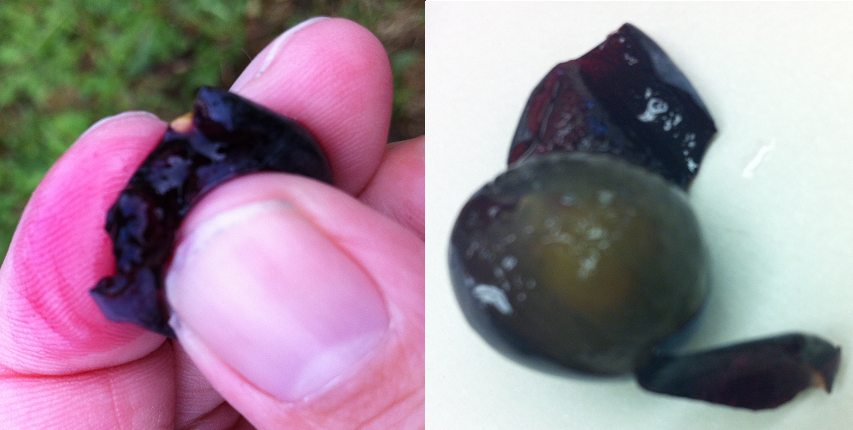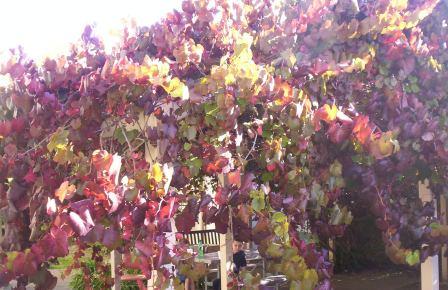|
Cascade (grape)
Cascade is a red complex hybrid grape variety that was created by French viticulturist Albert Seibel in the early 20th century in Aubenas, Ardèche, in the Rhône Valley. It has been commercially available in North America since 1938 and has since been planted in Canada and the United States (particularly New York). However, in warmer climates the grape is highly susceptible to a number of grapevine viruses, which has discouraged plantings of the variety.J. Robinson, J. Harding and J. Vouillamoz ''Wine Grapes - A complete guide to 1,368 vine varieties, including their origins and flavours'' pg 197, Allen Lane 2012 History and pedigree Cascade is a Seibel grape, being produced from a crossing of Seibel 7042 and Gloire de Seibel by the French viticulturist Albert Seibel in the early 1930s. The variety was first released for commercial production in 1938. Known originally as Seibel 13053, the grape was given the name "Cascade" by the Finger Lakes Wine Growers Association in 1970. ... [...More Info...] [...Related Items...] OR: [Wikipedia] [Google] [Baidu] |
Hybrid Grape
Hybrid grapes are grape varieties that are the product of a crossing of two or more ''Vitis'' species. This is in contrast to crossings between grape varieties of the same species, typically ''Vitis vinifera'', the European grapevine. Hybrid grapes are also referred to as inter-specific crossings or "Modern Varieties." Due to their often excellent tolerance to powdery mildew, other fungal diseases, nematodes, and phylloxera, hybrid varieties have, to some extent, become a renewed focus for European breeding programs. The recently developed varieties, Rondo, and Regent are examples of newer hybrid grape varieties for European viticulturalists. Several North American breeding programs, such as those at Cornell and the University of Minnesota, focus exclusively on hybrid grapes, with active and successful programs, having created hundreds if not thousands of new varieties. Hybrid varieties exhibit a mix of traits from their European, Asiatic, and North American parentage. Those ... [...More Info...] [...Related Items...] OR: [Wikipedia] [Google] [Baidu] |
Vitis
''Vitis'' (grapevine) is a genus of 79 accepted species of vining plants in the flowering plant family Vitaceae. The genus is made up of species predominantly from the Northern Hemisphere. It is economically important as the source of grapes, both for direct consumption of the fruit and for fermentation to produce wine. The study and cultivation of grapevines is called viticulture. Most cultivated ''Vitis'' varieties are wind-pollinated with hermaphroditic flowers containing both male and female reproductive structures, while wild species are dieceous. These flowers are grouped in bunches called inflorescences. In many species, such as ''Vitis vinifera'', each successfully pollinated flower becomes a grape berry with the inflorescence turning into a cluster of grapes. While the flowers of the grapevines are usually very small, the berries are often large and brightly colored with sweet flavors that attract birds and other animals to disperse the seeds contained within the ber ... [...More Info...] [...Related Items...] OR: [Wikipedia] [Google] [Baidu] |
Munson Grape
Jaeger 70 (also known as Munson) is a hybrid of two American species of grape, '' Vitis lincecumii'' and ''Vitis rupestris'' developed by Hermann Jaeger (1844–1895), a Swiss-American who settled in Missouri. He named the successful hybrid for his friend and fellow grape breeder, T.V. Munson. However the grape has become better known by Jaeger's selection number, 70. The grape's primary importance is as the female progenitor of many French - American hybrid grapes in the breeding program run by viticulturist Albert Seibel. Relationship to other grapes Jaegar 70 was crossed with the Languedoc-Roussillon wine grape Aramon noir to create the hybrid variety Flot rouge Flot rouge is a red hybrid grape that is a crossing of Munson (also known as Jaeger 70) and the Languedoc-Roussillon wine grape Aramon noir. The grape was created by French viticulturalist Albert Seibel and was crossed with the Seibel grape 405 ....J. Robinson, J. Harding and J. Vouillamoz ''Wine Grapes - A compl ... [...More Info...] [...Related Items...] OR: [Wikipedia] [Google] [Baidu] |
Alicante Ganzin
Alicante Ganzin is a red French wine grape variety. Unlike most ''Vitis vinifera'' wine grapes, Alicante Ganzin is a teinturier with dark flesh that produces red juice. Most varieties used to produce red wine, such as Cabernet Sauvignon, Syrah, etc., have clear color flesh and juice with the wine receiving its color through a maceration process where the color seeps out of the grape skins for as long as they are in contact with the juice. Alicante Ganzin can thus produce light red and ''rose'' colored wine without maceration. It is believed that Alicante Ganzin is often described as the progenitor of all French teinturier grapes.J. Robinson ''Jancis Robinson's Guide to Wine Grapes'' pg 22 Oxford University Press 1996 History While Alicante Ganzin is believed by ampelographers to be the progenitor of all French teinturiers, the exact origins of the grape variety are not clear. Some, such as wine expert Jancis Robinson, describes the grape as a cross of Alicante Bouschet and a h ... [...More Info...] [...Related Items...] OR: [Wikipedia] [Google] [Baidu] |
Alicante Bouschet
Alicante Bouschet or Alicante Henri Bouschet is a wine grape variety that has been widely cultivated since 1866. It is a cross of Petit Bouschet (itself a cross of the very old variety Teinturier du Cher and Aramon) and Grenache.Alicante Henri Bouschet , , accessed on June 26, 2010 Alicante is a '' teinturier'', a grape with red flesh. It is one of the few ''teinturier'' grapes that belong to the '' |
Teinturier
Teinturier grapes are grapes whose flesh and juice is red in colour due to anthocyanin pigments accumulating within the pulp of the grape berry itself. In most cases, anthocyanin pigments are confined to the outer skin tissue only, and the squeezed grape juice of most dark-skinned grape varieties is clear. The red color of red wine comes from anthocyanins extracted from the macerated (crushed) skins, over a period of days during the fermentation process. The name teinturier comes from French, meaning to dye or to stain. Wines ''Teinturier'' varieties, while containing a lot of color, usually make special wines, perhaps due to a higher level of tannins, compounds structurally related to the anthocyanins. Many winemakers blend small volumes of ''teinturier'' juices into their wines, to boost the colour, without dramatically impacting the taste. Examples *Alicante Bouschet * Alicante Ganzin *Carolina Black Rose * Chambourcin * Colorino * Dunkelfelder * Gamay de Bouze * Grand N ... [...More Info...] [...Related Items...] OR: [Wikipedia] [Google] [Baidu] |
Chasselas Musqué
Muscat of Alexandria is a white wine grape that is a member of the Muscat family of ''Vitis vinifera''. It is considered an "ancient vine", and wine experts believe it is one of the oldest genetically unmodified vines still in existence.J. Robinson ''Vines Grapes & Wines'' pg 185 Mitchell Beazley 1986 The grape originated in North Africa, and the name is probably derived from its association with Ancient Egyptians who used the grape for wine making. It is also a table grape used for eating and raisins. Muscat of Alexandria is cultivated very heavily on the island of Lemnos in the North Eastern Aegean region of Greece, and reputedly Cleopatra drank muscat wine from there. In Italy wine is made from the grape on the island of Pantelleria, and it is grown in Calabria and Sicily where it is known as ''Zibibbo''. In Spain, the grape is the sixth most planted white grape variety with grown in 2015, mainly in Málaga, Alicante, Valencia, and the Canary Islands. It is an important ... [...More Info...] [...Related Items...] OR: [Wikipedia] [Google] [Baidu] |
Concord (grape)
The Concord grape is a cultivar derived from the grape species ''Vitis labrusca'' (also known as fox grape) that are used as table grapes, wine grapes and juice grapes. They are often used to make grape jelly, grape juice, grape pies, grape-flavored soft drinks, and candy. The grape is sometimes used to make wine, particularly sacramental and kosher wine. Traditionally, most commercially produced Concord wines have been finished sweet, but dry versions are possible if adequate fruit ripeness is achieved. The grape is named after the town in Massachusetts where it was developed. The skin of a Concord grape is typically dark blue or purple, and often is covered with a glaucous epicuticular wax "bloom" that can be rubbed off. It is a slip-skin variety, meaning that the skin is easily separated from the fruit. Concord grapes have large seeds and are highly aromatic. The Concord grape is particularly prone to the physiological disorder black spot. In the United States 417,800 t ... [...More Info...] [...Related Items...] OR: [Wikipedia] [Google] [Baidu] |
Crossing (plant)
Plant breeding is the science of changing the traits of plants in order to produce desired characteristics. It has been used to improve the quality of nutrition in products for humans and animals. The goals of plant breeding are to produce crop varieties that boast unique and superior traits for a variety of applications. The most frequently addressed agricultural traits are those related to biotic and abiotic stress tolerance, grain or biomass yield, end-use quality characteristics such as taste or the concentrations of specific biological molecules (proteins, sugars, lipids, vitamins, fibers) and ease of processing (harvesting, milling, baking, malting, blending, etc.). Plant breeding can be performed through many different techniques ranging from simply selecting plants with desirable characteristics for propagation, to methods that make use of knowledge of genetics and chromosomes, to more complex molecular techniques. Genes in a plant are what determine what type of qualit ... [...More Info...] [...Related Items...] OR: [Wikipedia] [Google] [Baidu] |
Vitis Lincecumii
''Vitis'' (grapevine) is a genus of 79 accepted species of vining plants in the flowering plant family Vitaceae. The genus is made up of species predominantly from the Northern Hemisphere. It is economically important as the source of grapes, both for direct consumption of the fruit and for fermentation to produce wine. The study and cultivation of grapevines is called viticulture. Most cultivated ''Vitis'' varieties are wind-pollinated with hermaphroditic flowers containing both male and female reproductive structures, while wild species are dieceous. These flowers are grouped in bunches called inflorescences. In many species, such as ''Vitis vinifera'', each successfully pollinated flower becomes a grape berry with the inflorescence turning into a cluster of grapes. While the flowers of the grapevines are usually very small, the berries are often large and brightly colored with sweet flavors that attract birds and other animals to disperse the seeds contained within the berrie ... [...More Info...] [...Related Items...] OR: [Wikipedia] [Google] [Baidu] |
Vitis Rotundifolia
''Vitis rotundifolia'', or muscadine, is a grapevine species native to the southeastern and south-central United States. The growth range extends from Florida to New Jersey coast, and west to eastern Texas and Oklahoma. It has been extensively cultivated since the 16th century. The plants are well-adapted to their native warm and humid climate; they need fewer chilling hours than better known varieties, and thrive in summer heat. Muscadine berries may be bronze or dark purple or black when ripe. Wild varieties may stay green through maturity. Muscadines are typically used in making artisan wines, juice, and jelly. They are rich sources of polyphenols. In a natural setting, muscadine provides wildlife habitat as shelter, browse, and food for many birds and animals. It is also a larval host for the Nessus Sphinx Moth ('' Amphion floridensis'') and the Mournful Sphinx Moth ('' Enyo lugubris''). Taxonomy and pathology Although in the same genus ''Vitis'' with the other grapevine ... [...More Info...] [...Related Items...] OR: [Wikipedia] [Google] [Baidu] |
Vitis Rupestris
''Vitis rupestris'' is a species of grape native to the United States that is known by many common names including July, Coon, sand, sugar, beach, bush, currant, ingar, rock, and mountain grape. It is used for breeding several French-American hybrids as well as many root stocks. Distribution and ecology The natural distribution of ''Vitis rupestris'' is concentrated in the Ozark Hills of Missouri and Arkansas. The species is less common in scattered populations east as far as Pennsylvania and southwest into Oklahoma and Texas. There are a few reports of the species occurring in the San Francisco Bay area of California, but these are most likely escapes from cultivation. ''Vitis rupestris'' is a self-supporting bushy plant that does not grow in the shade, and is found only on rocky riverbanks and streambanks. Much of its habitat has been destroyed due to damming of rivers and destruction of islands for navigation. ''Vitis rupestris'' has been listed as threatened or endangere ... [...More Info...] [...Related Items...] OR: [Wikipedia] [Google] [Baidu] |








